|
1
Release tension on the string to be changed.
|
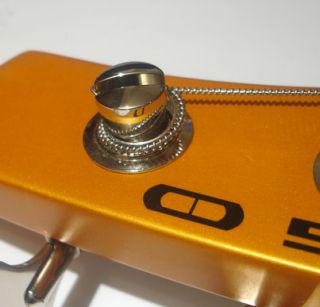
|
|
2
(Optional) Cut off string right before it meets the tuning post. This step is not necessary, but it is much easier to remove the string without damaging the finish on the bass if you donít have to get the tangled part through the hole in the bridge.
JB1 suggestion, soon to be photographed:
(Optional) Cut off string right before it goes over the saddle. This step is not necessary, but it is much easier to remove the string without damaging the finish on the bass if you donít have to get the whole string through the hole in the bridge. |
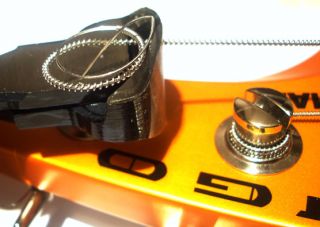
|
|
3
Slide the string through the bridge hole, and be careful not to damage the finish.
|

|
|
4
(Optional, only necessary when changing gauges) Check that the new string seats properly into the nut. Ideally the string will make contact with the nut for most of the bottom half of the string, and if the string cannot make contact with the bottom of the nut slot you need to widen the slot. In extreme cases, when going from real heavy to real light, a new nut might have to be cut because the nut slots are so wide that the strings can move sideways. In that case, send the bass to Jongitarz. |
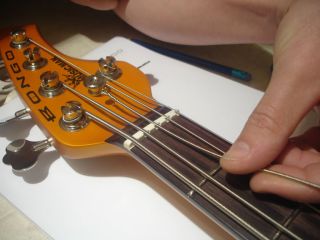
|
|
5
(Optional, but never a bad idea) Put some kind of lubricant into the nut slot so that the string wonít stick in the slot. Very important on instruments with d-tuner. I like a pencil (B2 is good)because itís cheap and handy. Others might use graphite powder or something.
|
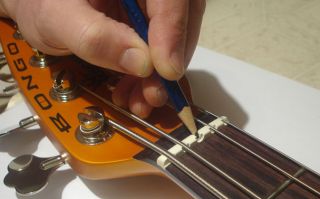
|
|
6
Whip out a pack of your favourite EB strings!
|

|
|
7
Put the new string on, and 5 cm (2Ē) beyond the tuning post you bend the sting a sharp 90 degrees. On basses with non-taper posts (like fender and such), make that 10 cm (4"). Nowadays this is often not necessary, as string windings rarely come undone. However, itís an easy thing to do and it gives you peace of mind. If you use strings with round cores itís a must.
|
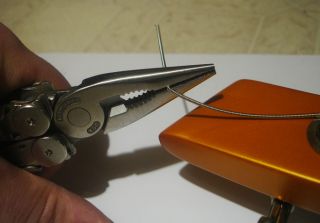
|
|
8
Cut the string off 2,5 cm (1Ē) beyond the bend. Some posts may have holes that are not that deep, and then you'll obviously want to cut the string shorter. |
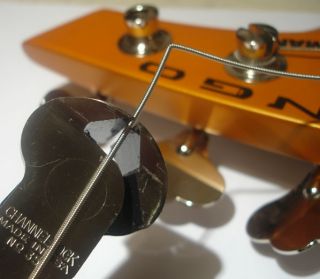
|
|
9
Make sure that the angled part of the string points down towards the peg head. If not, carefully twist the string until it does. Make sure the ball end twists too! This is important, because a twisted core will make your string perform less than perfect. |
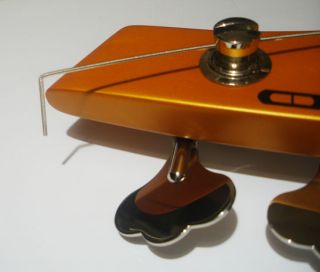
|
|
10
Insert angled string end into tuning peg center hole, start turning the key and pull the string back towards the bridge. Be careful when pulling on the string, donít use pliers and keep the string as straight at possible.
|
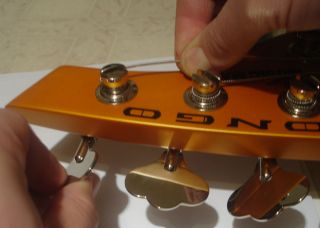
|
|
11
With the really big strings it is sometimes easier to grip around the peg to tension the string. |
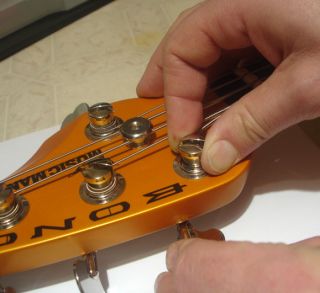
|
|
12
When the string somewhat tight (but not tuned to pitch) push down quite hard just in front of the saddle to make a positive break point for the string.
|
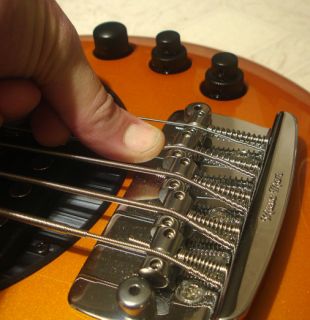
|
|
13
Tune to pitch and give the string a good yanking. Tune again and you should be done. |
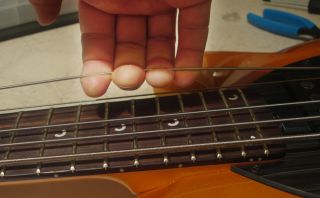
|